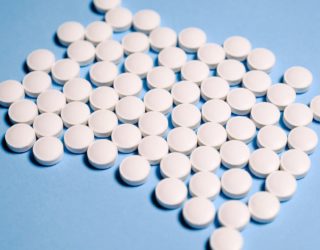Without a doubt, prescription opioids have recently earned their reputation as some of the most highly addictive medications that exist. Often people who have become addicted to these medications didn’t think they could become hooked—especially since it was a doctor providing them with these painkiller pharmaceuticals. With as many addiction types that exist, it’s no small wonder that legislatures are beginning to crack down on their availability.
Opioids Detox


Opioids Detox
Opioids Detox Center at Windward Way
However, there is nothing to worry about: Windward Way’s program of addiction treatment can help release you from slavery to opioids. Our medically supervised opioids detox is the place to begin. Since Windward Way structures its inpatient detox for opioids to meet only the best of standards, you will soon discover why we are so well known for our integrity, our personalized care—and above all, our effectiveness.
In fact, every team member at Windward Way is well aware of how powerful your addiction to an opioid drug really is. Many people don’t fully realize how destructive these types of drugs can be. As a rehab center for addiction to opiate-based drugs, we will not only give you the unique care you deserve, we’ll also craft each step of your opioids rehab to fit your specific needs. The first step is to assess how an opioids detox can help your situation. Discover your freedom now: (855) 491-7694.
Since opioid drugs such as OxyContin® or fentanyl are so addictive, the withdrawals from coming off these prescription medications can be particularly difficult. Aches and pains, profuse sweating, insomnia, and intense drug cravings are common when a person withdraws from opioid medications. At Windward Way’s prescription drug detox, our staff will determine if prescription supplement medications are appropriate for you to lessen these symptoms.
The committed people at Windward Way know about addiction—they’re experts, in fact. However, we know recovery even better! Our goal is to re-invigorate men’s passion for their new lives in recovery. We do this through providing structure people need to recover from a severe addiction to opioids. We’re convinced that our opioids addiction rehab can be the new foundation you’re looking for. We want to be your partner in your discovery we will help provide you with . . . that recovery is totally worth it. (855) 491-7694.
Opioid Detox Programs to Treat Withdrawal Symptoms
Seeking help for opioid addiction is a difficult first step to take. However, enrolling in a rehabilitation center will not only reduce the risks of relapse, overdoses, or other complications but also improve your wellbeing. Staying informed and educated, talking openly about it with healthcare providers and searching for support groups and treatment programs should not be shameful. While the withdrawal process will be painful at times, the effort is well worth it and has dramatic consequences on your physical and mental health.
What Are the Common Symptoms of Acute Withdrawal?
Withdrawal symptoms largely depend on the severity of the addiction, the patient’s overall state, the frequency of usage and the type of drug.
Some of the most common symptoms include:
- Depression
- Agitation
- Anxiety
- Restlessness
- Excessive sweating
- Muscle cramping
- Sleep issues
When Does the Withdrawal Pain Peak?
Withdrawal symptoms can begin as soon as six hours after the patient has stopped taking the opioid. In most cases, the symptoms reach their peak after about 72 hours have passed. That is the moment when the early effects grow in intensity and new ones occur, such as chills, nausea, stomach aches, vomiting or diarrhea.
Opioid withdrawal symptoms can last up to a month, with the first week being the worst.
What Are the More Serious Side Effects of Detoxing from Opioids?
While painful, the withdrawal and detox process from opioids is not usually life-threatening. Possible complications include vomiting or aspiration that can cause a lung infection, dehydration, or chemical and mineral disturbances.
However, the most serious side effect of opioid detoxing is relapsing. After the withdrawal, the patient’s tolerance to the drugs decreases significantly, which means that they can overdose with smaller doses than before, increasing death risks.
How Long Does It Take to Detoxify Fully?
There is no one-size-fits-all treatment for opioid abuse. Most professionals adapt their methods based on the unique needs of their patients. Some specialists claim that a recovery process needs at least six months at the end of which patients may still experience occasional withdrawal symptoms.
Rapid detoxification is also an option, although most doctors will avoid or advise against it, as death is a potential risk. Specialists perform this method under anesthesia and using opioid-blocking drugs like naloxone or naltrexone that decrease the intensity of the withdrawal symptoms dramatically. However, the patient can still experience vomiting sensations, and since they are under anesthesia, they risk choking.
How Can Medical Detox Help?
Several medications have proven to be effective in opioid detox programs as they can reduce withdrawal symptoms and increase patients’ comfort. The doctor in charge of the treatment will prescribe them according to several factors and the different stages of recovery.
Some of the most common medication for opioid detox include:
- Buprenorphine/Naltrexone – Buprenorphine/Naltrexone is a long-acting opioid, commonly prescribed for opioid withdrawal. It can reduce the intensity of withdrawal symptoms and the cravings that come with detox, but without the specific opioid high.
- Buprenorphine – Buprenorphine is similar to Buprenorphine/Naltrexone, in the sense that it helps with dealing with the withdrawal symptoms. Partially an opioid agonist. This med also lacks the common sense of euphoria opioid drug users usually experience. Buprenorphine is available either as a pill or as a sublingual film, but it can also be combined with naloxone, in a formula known as Suboxone.
- Probuphine – Probuphine is a newly-approved version of buprenorphine. Most doctors prescribe it for at least six months and in small doses. The primary goal of this medication is to prevent abuse.
- Clonidine – Clonidine has no effect in reducing or even eliminating the risk of abuse. However, it can help control a patient’s blood pressure during detox treatment.
- Naltrexone – Naltrexone is commonly used to block opioid effects but can also be used for withdrawal symptoms, along with Buprenorphine/Naltrexone and buprenorphine. It is available either as a pill or as a monthly injection under the name of Vivitrol.
While not life-threatening or as extreme as other detox programs, opioid withdrawal can still be difficult to manage on your own. Your chances of overcoming your addiction and resisting temptations are higher if you enroll in a facility that can guide you every step of the way. Look for a facility that will provide the kind of treatment you need and always build a support system that can help you get through the most difficult stages of recovery.




